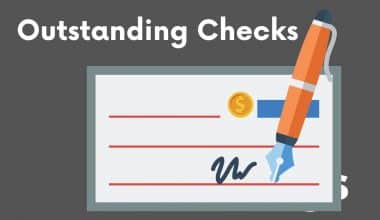Peer-to-peer lending (P2P) is a type of financial transaction that is carried out between two individuals without the intervention of a financial institution. It is generally carried out on online platforms that connect lenders to borrowers.
How Does P2P Lending Work?
In the peer-to-peer lending process, a specialized online platform is designed, and all transactions are carried out on the platform. The following steps are generally how the process works:
- An application is made available on the lending platform for those who intend to secure loans to fill
- The platform evaluates the application and establishes the applicant’s risk and credit standing. After that, the applicant is given the proper interest rate.
- After approving the applicant’s application, we grant them access to a range of investors. We assign the appropriate interest rate to the applicant based on their credit score.
- The candidate may consider each proposed alternative before selecting one.
- In addition to repaying the principal amount when the loan matures, the applicant is responsible for making periodic interest payments.
- The company operating the platform must get payment from both investors and borrowers in exchange for the services it provides.
Advantages of P2P Lending
There are several advantages of peer-to-peer lending that benefit both the lenders and the borrowers. They include:
- The process is quick and convenient because it takes place online.
- Due to greater lender competition and reduced origination fees, P2P loans typically have lower interest rates.
- P2P loans offer variety to the lenders, they offer a number of different projects, giving investors a wide range of options for where to put their money.
- Peer-to-peer lending may be a more readily available source of capital for some borrowers than traditional loans from banking institutions. This could be because of the borrower’s poor credit standing or the loan’s unusual purpose making P2P an easier source of funding.
- Some websites offer backup money to shield investors from defaulting borrowers.
Disadvantages of Peer-to-Peer Lending
- If you, as the borrower, have trouble repaying the loan, you might not be as protected as you would be if you took out a loan from a typical lender.
- The Financial Services Compensation Scheme does not insure investments made in peer-to-peer networks, so you could potentially lose everything you invest. Platforms take precautions to prevent this, but there are no guarantees since the borrower’s ability to repay is typically what determines whether you will receive your capital and interest back.
- Peer-to-peer lending is prohibited in certain jurisdictions, and others demand that businesses offering these services adhere to strict investing rules. As a result, certain borrowers or lenders might not be able to use it.
- Peer-to-peer lending is so widely available that it may be tempting to take out more debt than is necessary. Additionally, some peer-to-peer platforms will encourage you to borrow the full amount if you are approved for a higher loan than the amount you requested. This can lead to more financial difficulties as you might take more than you need because of the ease of securing the funds.
Is P2P Lending Legal?
(P2P) lending, also known as marketplace lending, is generally legal in most countries, including the United States, the United Kingdom, and many other parts of the world. However, the regulations and laws that apply to P2P lending may vary depending on the country or region.
In many countries, P2P lending platforms are required to register with the appropriate financial regulatory agency and comply with specific rules and regulations. For example, in the United States, P2P lending platforms are regulated by the Securities and Exchange Commission (SEC) and must register as a securities broker-dealer, while in the United Kingdom, the Financial Conduct Authority (FCA) oversees the P2P lending industry.
Additionally, P2P lending platforms may also have to comply with consumer protection laws, data privacy laws, and other regulations specific to the country or region they operate in.
It’s important to note that while P2P lending can offer benefits such as lower interest rates for borrowers and higher returns for investors, it also carries risks, such as the potential for default or fraud. As with any investment, it’s important to thoroughly research and understand the risks before participating in P2P lending.
Can You Make Money with P2P Lending?
Peer-to-peer lending can be a way to earn a return on your money, but it also comes with risks.
Borrowers receive loans with lower interest rates than what they would pay to a bank, while lenders receive interest income on their investments.
To make money with peer-to-peer lending, you need to invest in high yield, low-risk loans. P2P platforms let you choose the loans you will invest in based on the borrower’s credit score, income, and loan purpose
However, it’s important to note that peer-to-peer lending comes with risks. Borrowers may default on their loans, which means that you could lose some or all of the money you invested. Reduce this risk by diversifying your investments across multiple loans and carefully considering the creditworthiness of each borrower.
As the regulatory environment around peer-to-peer lending differs by jurisdiction, it’s important to understand the relevant regulations in your area.
Overall, P2P lending can be a way to earn a return on your money, but it’s important to carefully consider the risks and do your research before investing.
Is Peer-to-peer Lending a Good Idea?
Peer-to-peer lending can be a good idea for both lenders and borrowers in certain situations, but it also carries some risks.
The main advantage of peer-to-peer lending is that it can provide borrowers with access to loans that they might not be able to obtain through traditional banks or financial institutions. This is because peer-to-peer lending platforms typically have fewer requirements for credit scores and other financial criteria and may offer loans at lower interest rates than traditional lenders.
For lenders, peer-to-peer lending can offer higher returns on their investment than other traditional investments, such as savings accounts or bonds. Lenders can also diversify their investment portfolios by lending to a range of borrowers on a peer-to-peer platform.
Peer-to-peer lending, however, carries some associated risks. Borrowers who take out loans may default on their payments, which can result in losses for lenders. Additionally, there is a risk of fraud, as some peer-to-peer lending platforms may not have adequate measures in place to verify the identity and creditworthiness of borrowers.
Peer-to-peer lending can be a good idea for both borrowers and lenders, but it is important to carefully consider the risks involved before participating in this type of lending. As with any financial decision, it’s important to do your own research, consider your own financial situation and goals, and seek advice from a professional financial advisor if necessary.
What Happens if You Don’t Pay Back a Peer-to-peer Loan?
It is significant to note that platforms for peer-to-peer lending tend to have their own policies on defaults and late payments. Before signing any loan agreements, borrowers and investors should carefully examine them, as they may vary from platform to platform.
The lender has the legal right to take action if the borrower doesn’t repay the debt. Peer-to-peer websites typically demand collateral, such as real estate or other valuables, in the event of default. Although the peer-to-peer lending website typically serves as a debt collection agency, it occasionally employs outside collectors to help investors recover any losses.
How Can I Start P2P Lending?
If you’re interested in getting started with peer-to-peer lending, here are some steps you can take:
- Research and choose a peer-to-peer lending platform: There are a variety of P2P lending platforms to choose from, each with different fees, minimum investment amounts, and borrower requirements. Some popular options include LendingClub, Prosper, and Upstart.
- Set up an account: Once you’ve chosen a platform, you’ll need to set up an account. This typically involves providing personal information, such as your name, address, and social security number.
- Add funds to your account: In order to invest in loans, you’ll need to add funds to your account. Most platforms allow you to add funds via electronic transfer, debit card, or wire transfer.
- Choose loans to invest in: Many P2P lending platforms allow you to browse and choose the loans you want to invest in based on factors like the borrower’s credit score, income, and reason for the loan. Some platforms also offer automated investing tools that will automatically invest your funds in loans that meet your chosen criteria.
- Monitor your investments: Once you’ve invested in loans, it’s important to monitor them to ensure that you’re earning the expected return and to identify any potential issues, such as missed payments or defaults.
As with any investment, it’s important to carefully consider the risks and potential returns of peer-to-peer lending before investing. It’s also important to diversify your investments across multiple loans and to carefully consider the creditworthiness of each borrower.
Peer-to-peer Lending Investing
P2P lending is a form of investing where individuals lend money directly to other individuals or businesses through an online platform. P2P lending can offer investors the potential for higher returns than traditional investments, such as savings accounts or bonds, but it also carries risks, such as the potential for borrower default.
Here are some steps to consider when investing in P2P lending:
- Choose a reputable P2P lending platform: Look for a platform that has a good track record, transparent fees, and clear information on how they evaluate and approve borrowers.
- Diversify your investments: Spread your investments across multiple borrowers or loans to reduce the risk of losing money if a borrower defaults.
- Evaluate the risk and return: Evaluate the risk and return of each loan before investing. Higher-risk loans may offer higher returns, but they also have a higher chance of default.
- Consider the fees: P2P lending platforms usually charge fees, such as a percentage of the amount invested or a fee for late payments. Make sure you understand these fees before investing.
- Monitor your investments: Keep track of your investments and regularly review the status of the loans you have invested in. This will help you to identify any potential issues early and take appropriate action.
It’s important to note that P2P lending is not without risk, and there are chances that you will not earn a return on your investment. As with any investment, it’s important to thoroughly research and understand the risks before participating in P2P lending.
Top Peer-to-peer Lending Platform
P2P lending platforms have gained popularity in recent years due to their ability to provide faster and more flexible financing options to borrowers and higher returns to investors. Here are some examples of popular P2P lending platforms:
Prosper: Prosper is another popular P2P lending platform that offers personal loans, debt consolidation loans, and home improvement loans. Best for those with high credit scores
Funding Circle: Funding Circle is a P2P lending platform that connects small businesses with investors who want to lend money to them. Best for small businesses
Kiva: Kiva is a P2P lending platform that focuses on microfinance, connecting lenders with borrowers in developing countries who need small loans to start or grow their businesses. Best for first-time borrowers
Upstart: Upstart is a P2P lending platform that specializes in personal loans for creditworthy borrowers who have limited credit histories or unconventional income sources. Best for Young people
LendingClub: LendingClub is one of the largest P2P lending platforms in the world, offering personal loans, business loans, and auto refinancing loans.
These P2P lending platforms have different lending criteria, interest rates, and loan terms, so borrowers and investors should carefully evaluate their options before choosing a platform to use.






